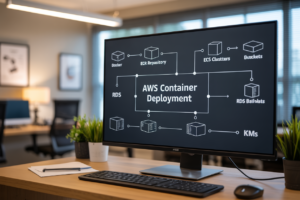Ever watched a Salesforce admin manually update 500 records and thought “there’s got to be a better way”? You’re right, there is. And it doesn’t involve hiring three more people or working weekends.
The difference between Salesforce experts and everyone else isn’t some secret knowledge—it’s mastering workflow rules and automation tools that handle repetitive tasks while you focus on what actually matters.
Whether you’re drowning in manual processes or just trying to make your Salesforce org less of a headache, this guide will walk you through exactly how to set up automations that actually work.
The truth is, most teams only use about 20% of Salesforce’s automation capabilities. But what if you could tap into the other 80%?
Understanding Salesforce Workflow Rules Fundamentals
A. What are Workflow Rules and Why They Matter
Workflow rules are Salesforce’s OG automation tool. They’re basically IF-THIS-THEN-THAT recipes that trigger specific actions when certain conditions are met. Want to automatically email customers when their case status changes? Workflow rules handle that. They save you countless hours of manual work while ensuring your processes run consistently.
B. Key Components of Effective Workflow Rules
Every workflow rule needs three essential parts:
- Evaluation Criteria – When should Salesforce check if the rule applies?
- Rule Criteria – What conditions must be true to trigger the rule?
- Actions – What happens when the criteria are met?
These building blocks let you create powerful automations without writing code.
C. Common Use Cases for Workflow Automation
Workflow rules shine in numerous scenarios:
- Sending welcome emails to new customers
- Updating related records when primary records change
- Setting follow-up tasks for sales reps
- Sending approval notifications to managers
- Field updates based on other field values
The sweet spot? Repetitive tasks that follow predictable patterns.
D. Limitations and Best Practices
Workflow rules have their limits – no looping, only four action types, and no complex logic. For best results, keep rules focused on single outcomes, document your automation strategy, and regularly audit your active rules. Remember: just because you can automate something doesn’t mean you should.
Setting Up Your First Workflow Rule
Setting Up Your First Workflow Rule
A. Navigating the Workflow Rule Interface
Ever tried finding a needle in Salesforce’s haystack of features? The workflow interface isn’t hiding, I promise. Head to Setup, type “Workflow” in the Quick Find box, and click “Workflow Rules.” Hit that “New Rule” button, select your object (like Leads or Opportunities), name your rule something you’ll actually remember later, and boom—you’re in.
Advanced Workflow Techniques for Business Process Optimization
Chaining Multiple Workflow Rules Together
Want to supercharge your Salesforce automation? Chain workflows together like a pro. When one rule completes, it updates a field that triggers another rule. This domino effect creates sophisticated process flows without code.
Integrating with Formula Fields for Dynamic Rules
Formula fields are your secret weapon in workflow rules. They evaluate complex conditions on-the-fly, making your workflows respond to changing business scenarios. Pop a formula field into your rule criteria and watch your automation get smarter.
Cross-Object Workflow Strategies
Breaking down silos between objects feels amazing. When a Case updates, trigger a workflow on the related Account. Or have an Opportunity status change automatically update the Contact. Cross-object workflows create truly connected processes that mirror your real business.
Comparing Workflow Rules with Other Salesforce Automation Tools
Process Builder vs. Workflow Rules: When to Use Each
Process Builder shines for multi-step processes, while Workflow Rules handle simple automations. The key difference? Process Builder can execute multiple actions from one trigger and update related records—something Workflow Rules can’t do. Still confused about which to pick? Think complexity—simple needs, use Workflow Rules.
Real-World Implementation Strategies
A. Documenting Your Automation Architecture
Ever tried explaining your Salesforce automation setup to a new team member? Nightmare, right? Start mapping your workflow rules, processes, and triggers visually. Use tools like Lucidchart or even Salesforce’s own schema builder. Your future self will thank you when troubleshooting that mystery workflow six months from now.
B. Change Management Best Practices
Don’t just build it and forget it. Create a review cycle for your automation. Schedule quarterly audits to identify unused or conflicting workflows. Always test changes in a sandbox environment first—I’ve seen too many horror stories of broken processes taking down entire sales operations. And please, document every change!
C. Performance Optimization Tips
Bloated workflows kill system performance. Focus on these quick wins: consolidate similar rules, limit evaluation criteria to absolute necessities, and use time-dependent actions sparingly. Remember that field updates trigger validation rules, so chain your actions thoughtfully to avoid unnecessary processing cycles.
D. Measuring Automation ROI
Track time savings religiously. For each automated process, calculate: (manual time per task × frequency) − implementation time. Don’t forget to measure error reduction too. One client cut data entry errors by 64% after implementing validation rules—that’s real money saved in data cleanup costs.
E. Future-Proofing Your Workflow Implementation
The only constant in Salesforce is change. Build flexibility into your automations from day one. Use custom settings to store configurable values rather than hardcoding. Create modular processes that can be independently modified. And stay current with Salesforce’s roadmap—Flow is clearly the future, so design with migration in mind.
Workflow rules and automation tools are the backbone of an efficient Salesforce implementation. By mastering the fundamentals, setting up thoughtfully designed rules, and implementing advanced techniques, you can transform manual processes into streamlined workflows that save time and reduce errors. The strategic comparison between workflow rules and other automation tools like Process Builder and Flow allows you to select the right solution for each business challenge.
Take the next step in your Salesforce journey by implementing these automation strategies in your organization. Start with a simple workflow rule addressing an immediate business need, then gradually expand your automation toolkit. Remember that effective automation isn’t just about technology—it’s about understanding your business processes and designing solutions that truly enhance productivity and user experience.




















